Oh Shenandoah, We Long to See You
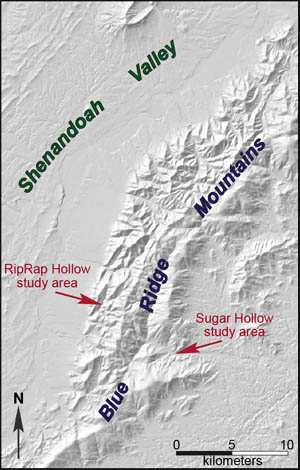
Overview map of the Blue Ridge Mountains and Shenandoah Valley with study areas.
This semester’s structural geology seminar is an upper level course populated with an eager crew of juniors and seniors. The class is working on three research projects intended to better understand the tectonics of the Appalachian Mountains. This past weekend was spent in the wilds of Shenandoah National Park collecting samples for lab analysis back at W&M.
For Geology students many weekends are spent in the field rather than in the library. At our first stop on Friday afternoon we pondered the origin of Rockfish Gap along the crest of the Blue Ridge Mountains and then made our way to camp. The night sky was clear with a riot of stars and a perfect temperature for comfortable sleeping.
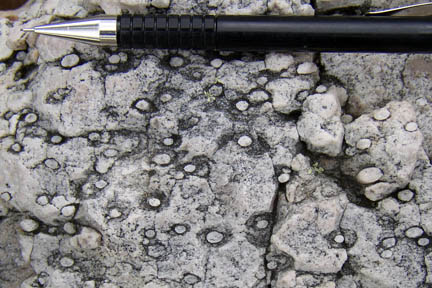
Close up of the quartz sandstone bedrock. Note the elliptical objects are fossilized worm burrows, before these rocks were deformed the burrows were circular in cross sectional view.”
On Saturday we traversed into Riprap Hollow, measuring rock structures and collecting samples of the quartz sandstone bedrock. During the collision between eastern North America and Africa, some 300 million years ago, these rocks were squeezed, sheared and distorted. One study will quantify the amount of distortion and deformation by statistically analyzing the shapes of many thousands of sand grains.
The traverse takes us through forests showing the first hint of their autumnal colors. Eight miles later we emerge back on the Skyline Drive, tired and loaded with an array of new samples.
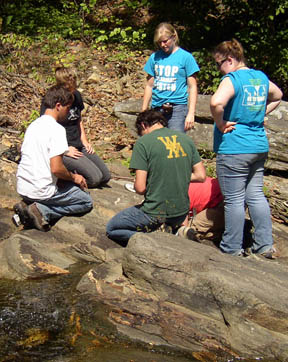
Research team has the bedrock surrounded in Sugar Hollow.
Sunday finds the seminar in Sugar Hollow, a steep valley on the east side of the Blue Ridge. Here a research team is studying the geometry, crustal architecture, of the deformed rock layers, attempting to ‘restore’ these layers to their pre-deformation state. We examine one billion year old granites and collect samples of strongly sheared metamorphosed sandstone.
Geology in the field is the first step, but the samples we’ve collected will be turned into slabs and thin sections for microscopic examination and analysis. More on our research as the semester progresses.

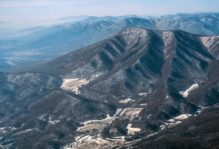
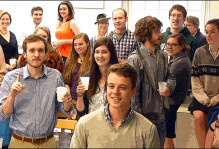
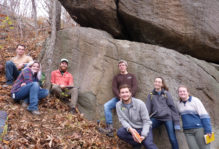
No comments.
Comments are currently closed. Comments are closed on all posts older than one year, and for those in our archive.